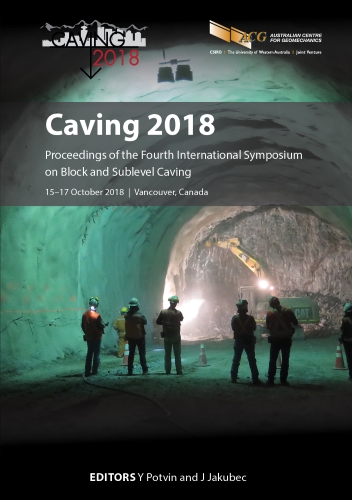Overview of mine scheduling for Oyu Tolgoi Underground Project

|
Authors: Fowke, S; Groeneveld, B |
DOI https://doi.org/10.36487/ACG_rep/1815_29_Fowke
Cite As:
Fowke, S & Groeneveld, B 2018, 'Overview of mine scheduling for Oyu Tolgoi Underground Project', in Y Potvin & J Jakubec (eds), Caving 2018: Proceedings of the Fourth International Symposium on Block and Sublevel Caving, Australian Centre for Geomechanics, Perth, https://doi.org/10.36487/ACG_rep/1815_29_Fowke
Abstract:
Mine scheduling at Oyu Tolgoi (OT) Underground Project is centred on executing the perfect shift. This paper will outline the best practice mine scheduling process used at OT with an overview of the structure and mechanics. Scheduling commences by the Mine Planning and Technical team offsite with plans transitioned to site for detailing in the three-month execution space. Mine development scheduling involves developing a build-up of activities that represent the latest mine design. The development tasks cover a range of ground support profiles based on life-of-mine requirements for the excavations and ground conditions, with task rates developed from first principles. Simulation is used to validate and test these rates in the schedule. The schedule is resource levelled, taking into account mine priorities, a calendar of working hours and system constraints. The schedule is integrated with construction planning through a number of defined interface points. Following this, plans are submitted to the Integrated Planning Process (IPP) where additional conflicts are identified and resolved. This paper will demonstrate how at OT, the mine planning process is structured and integrated with the whole project to ensure competing priorities are evaluated equally across the project.
Keywords: mine scheduling, resource levelling, management operating system, mine development
References:
OreWin Pty Ltd 2016, Oyu Tolgoi 2016 Oyu Tolgoi Technical Report, October 2016, Job No. 15016, OreWin Pty Ltd, Adelaide, viewed 28 April 2018,
© Copyright 2025, Australian Centre for Geomechanics (ACG), The University of Western Australia. All rights reserved.
View copyright/legal information
Please direct any queries or error reports to repository-acg@uwa.edu.au
View copyright/legal information
Please direct any queries or error reports to repository-acg@uwa.edu.au
